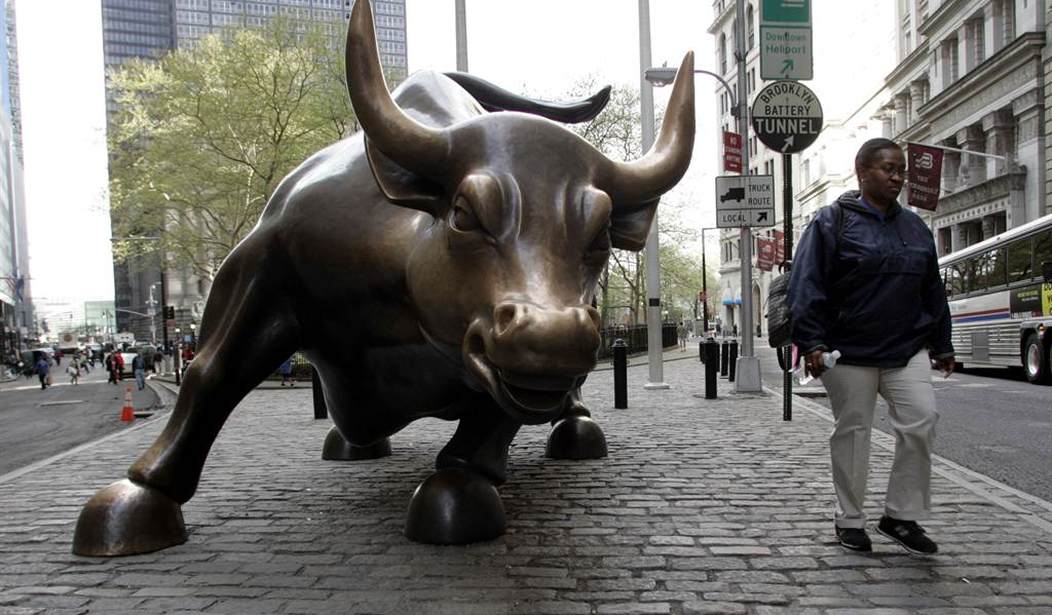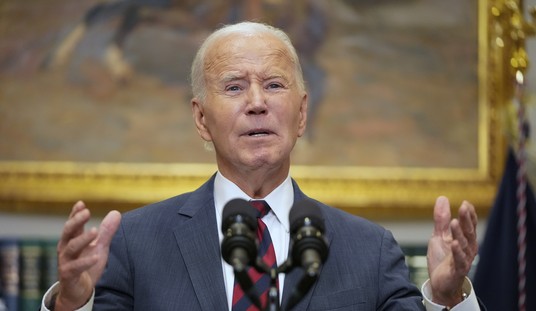The Dodd-Frank Wall Street Reform and Consumer Protection Act was signed into law in 2010 by President Barack Obama. Its supporters said that it would increase financial stability and transparency, prevent bailouts, and protect consumers from “abusive practices.”
I’m dubious — I don’t see how the new regulatory regime will accomplish the bulk of these goals. After all, look at what has really happened since passage: an extreme consolidation of financial institutions.
Marshall Lux and Robert Greene, in a new study entitled “The State and Fate of Community Banking,” show that the long-term trend in which community banks have diminished in number and importance has doubled in severity since Dodd-Frank. Community banks are dropping from the landscape of commerce in greater and greater number, more under the new regulatory regime than under the old.
You don’t have to be a “small-is-beautiful” fetishist to worry about this. The authors mention that community banks do serve smaller businesses, especially agriculture, more consistently than do larger institutions. But perhaps more importantly, the bigger banks remaining are just all that much bigger in the “too big to fail” department. Further, the fewer in number of small banks, the fewer that are able to rise to compete with the big ones. This seems to scuttle two of capitalism’s most obvious and irreplaceable features — openness to rivalry, competition, and loss, as in profit-and-loss. That is, only the smaller-sized businesses (in this case financial institutions) experience capitalism’s twin forces, competition and possibility of loss.
Big businesses receive protection from both. From government.
How, exactly? Greene and Lux explain the precise mechanisms at play under Dodd-Frank. The main factor is all-too-familiar: the regulations are not geared to the size of the regulated institutions, so economies of scale in regulatory compliance arise, bigger than ever. It’s easier for bigger businesses to bear the new burdens imposed by government. They outcompete not on the market so much as within the regulatory environment.
Recommended
Todd Zywicki, writing in the Washington Post, makes it clear how these “regulatory costs tend to fall proportionally heavier on smaller banks.” Leading to consolidation.
And we can forgive Zywicki an “I told you so.” He had indeed gone on record predicting this early in the Dodd-Frank era.
This is not exactly a breakthrough, and there’s no reason to nominate Mr. Zywicki for a Nostrodamus Award. He, Lux, and Greene are merely demonstrating an old, established principle. Economist Ludwig von Mises explained it scores of years ago. In A Critique of Interventionism, the Austrian economist explored the logic and inevitable consequences of Dodd-Frankish regulations, identifying a pattern so universal as almost to establish an archetype. Interventionists, he argued,
- see a “problem”;
- propose a “fix”;
- that fix puts us in a worse fix, as unintended consequences multiply;
- bureaucrats, intellectuals and activists identify anything but the previous fix as the cause of the new problems; and
- politicians and lobbyists scramble to add an additional fix to the mix.
That is why laws keep piling up. Each addition to the regulatory morass causes more problems, each typically identified as caused by “greed” or “lack of regulation,” not the regulation that set markets out of balance. And so more laws, more regulations, are put into the books. And the problems multiply.
It’s the way of ham-handed interventionism.
It’s like Whac-A-Mole, the arcade game: a mole pokes its head out of a hole. You hit it with a mallet. And then another mole pops up out of another hole. And you hit it. And you keep doing this, faster and faster, gaining points.
In the economic policy version of the game, the voters see you hit something. Ding! The politicians get points.
But more moles pop up.
In real life, however, it’s more like Hydra Whac-A-Mole. You remember the Hydra, from ancient myth? It’s a many-headed beast. Cut off a head, two grow in its place. The way to attack it is not by cutting off its heads. But they are there, and they are dangerous. So you see the temptation.
But in Whac-A-HydraMole, it’s the moles that keep multiplying. Bop one mole, out come two; bop another, up pop three. And it’s not just five holes on the board. It’s an infinity.
You cannot win at this game. The secret, as in massive thermonuclear war and Tic-Tac-Toe, is not to play.
Politicians, by and large, have yet to learn this wisdom.
Interventionism, as Mises called it — it goes by other names, such as dirigisme (control — the opposite of laissez faire), progressivism, protectionism, mercantilism — is still all the rage, in some variant or other.
And that’s why the problems that progressives identify keep on getting worse. Because they, as interventionists, cause more problems than they solve. Try to “solve” poverty by taking from the rich and giving to the poor? Soon, there’s not as much money in rich pockets to invest, and there are less jobs: the poor become trapped; they cease to improve themselves for work; their children lack role models; &tc., &tc., &tc.
And remember, interventionists have had their way for a very long time. Mises was writing as an underdog, back in the 1930s. And the progressive agenda of high taxes, income redistribution, centralized financial management (central banking), and massive, ever-increasing regulation, has been at the heart of American political life since World War I. Once you realize that progressive ideas have dominated modern life, things make a great deal of sense. When you recognize the obvious political truth, that Republican Teddy Roosevelt was a progressive before Woodrow Wilson, and that Herbert Hoover was a professional social engineer in good standing before his Democratic successor, FDR, cooked up the New Deal, the last hundred years become a good deal more clear.
Interventionism keeps on messing up the progress that free minds and free markets create.
The current big obsession of the day, income inequality, is yet another typical self-defeating trap. Nearly everything progressives have thrown at it makes it worse. For interventionism doesn’t help the people its proponents say it is for.
So what happened during and after the crash of 2007-2008 was no aberration. Sure, something bad happened. Politicians blamed it on “the market.” And they proceeded to “do something.” They rushed to reform the financial regulatory system in accord with their preconceived notions. Since then the financial system has become more concentrated, with community banks dropping off like flies. They said they were protecting us against future bailouts (progressives say they hate bailouts, but really — bailouts are half of their program!), but the moral hazard is increasing, and the structure of the financial market (which when anti-trust issues come up they get much exercised about) looms large and ominous and unstable.
The logic of interventionism is the logic of central planning. It is inimical to decentralism; it encourages concentration of both power and wealth.
Politicians who play at the game of interventionism say they are defenders of the downtrodden, but they simply play into the hands of the “fat cats.”
Or, as they might as well say in the halls of Capitol Hill: Hail, Hydra.

























Join the conversation as a VIP Member